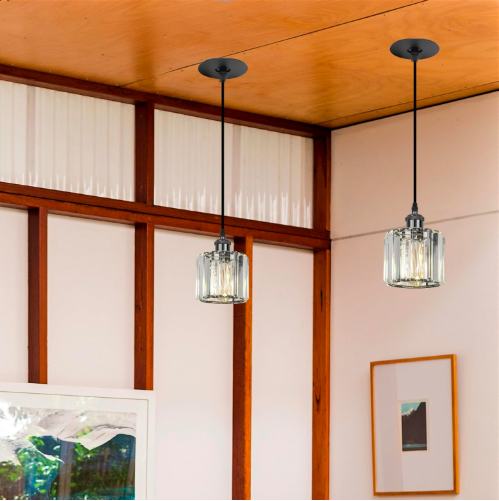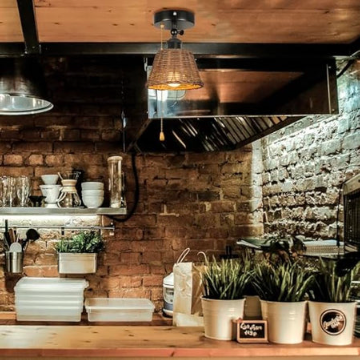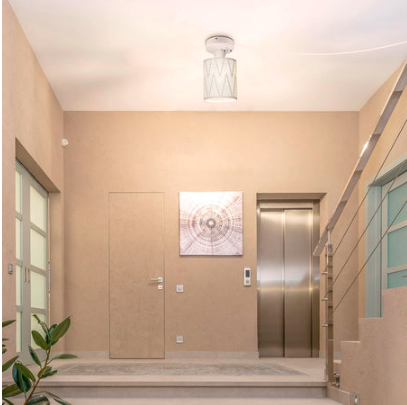The kitchen has evolved from a purely functional space into the heart of the home, where families gather, meals are prepared, and memories are made. Lighting plays a crucial role in creating the right ambiance and functionality in this essential room. Among the various lighting options available, pendant lights have emerged as a popular choice for homeowners looking to combine style with practicality. These versatile fixtures hang from the ceiling, providing focused illumination exactly where you need it most.
Whether you’re updating an outdated kitchen or designing a brand new space, pendant lights offer an opportunity to make a bold design statement while improving your kitchen’s overall functionality. From illuminating kitchen islands and dining areas to adding visual interest above countertops, pendant lights can dramatically transform the look and feel of your cooking space. This guide will walk you through everything you need to know about selecting, installing, and maintaining pendant lights to create the kitchen of your dreams.
Introduction to Pendant Lights
Pendant lights are suspended fixtures that hang from the ceiling by a cord, chain, or metal rod, creating a distinctive lighting solution that bridges functionality and aesthetics. Unlike flush-mount ceiling lights that sit directly against the ceiling, pendants drop down into the room, bringing illumination closer to work surfaces and creating visual layers in your kitchen design. These fixtures come in countless shapes, sizes, and materials, ranging from minimalist glass globes to elaborate metalwork designs.
The adjustable nature of pendant lights allows you to customize the hanging height to suit your specific needs, whether that’s providing task lighting over a kitchen island or ambient lighting over a breakfast nook. Their versatility makes them suitable for various kitchen layouts and design schemes, from compact galley kitchens to expansive open-concept spaces.
The Benefits of Using Pendant Lights in the Kitchen
Pendant lights for kitchen deliver targeted task lighting precisely where kitchen activities happen most, eliminating shadows on countertops and islands that overhead fixtures often create. This focused illumination makes food preparation safer and more efficient, allowing you to clearly see what you’re chopping, measuring, or cooking. Beyond functionality, pendant lights serve as sculptural elements that define zones within open-plan kitchens, visually separating cooking areas from dining or living spaces without requiring physical barriers. They draw the eye upward, making rooms feel more spacious while adding architectural interest to otherwise plain ceilings.
The ability to install multiple pendants at varying heights creates dynamic visual rhythm and allows you to control lighting levels in different areas independently. Pendant lights also offer exceptional flexibility in creating ambiance—dimmer switches transform bright task lighting into soft, intimate illumination perfect for evening entertaining. Unlike recessed lighting that requires extensive ceiling modifications, pendants can be installed with minimal structural changes, making them an accessible upgrade for most kitchens. Their position closer to eye level creates a warmer, more inviting atmosphere compared to distant ceiling fixtures, contributing to the kitchen’s role as a welcoming gathering space for family and friends.

Popular Styles and Designs
Modern pendant lights feature clean lines, geometric shapes, and materials like brushed nickel, matte black, or polished chrome, perfectly complementing contemporary kitchens with their minimalist aesthetic. Industrial-style pendants incorporate exposed bulbs, metal cages, and vintage-inspired finishes that add character to both modern lofts and farmhouse kitchens seeking an edgy contrast.
Traditional pendant designs showcase ornate details, classic materials like brass or bronze, and decorative glass shades that harmonize with timeless kitchen cabinetry and molding. Farmhouse pendants embrace rustic charm through distressed finishes, mason jar designs, and weathered wood accents that enhance country-style kitchens. Glass pendants range from clear options that maintain visual openness to colored or textured varieties that become focal points while diffusing light beautifully.
Globe pendants offer spherical elegance in various sizes, working equally well in clusters or as standalone statements. Multi-light pendants combine several small fixtures on a single canopy, providing substantial illumination while maintaining a cohesive look ideal for larger islands or dining areas.

Choosing the Right Pendant Lights
Start by measuring your kitchen island or table—the combined width of your pendant lights should equal roughly two-thirds to three-quarters of the surface length to maintain proper visual proportion. For standard eight-foot ceilings, hang pendants so the bottom sits 30 to 36 inches above the countertop, adding three inches of clearance for each additional foot of ceiling height to prevent head bumps while maintaining effective illumination.
Consider the scale of your fixtures in relation to your space—oversized pendants make bold statements in large kitchens but overwhelm compact areas, while tiny fixtures disappear in expansive rooms. Match your pendant finish and style to existing hardware like cabinet pulls and faucets to create cohesive design flow throughout the kitchen. Evaluate your lighting needs based on activities—if your island serves primarily as a prep area, prioritize bright, clear light with higher lumens, but if it doubles as a dining space, choose dimmable options for versatility. Think about how many pendants you need by spacing them 24 to 30 inches apart for balanced light distribution, typically resulting in two pendants for islands up to six feet and three for longer surfaces.
Test how different shade materials affect light quality—clear glass maximizes brightness, frosted diffuses evenly, and solid shades direct light downward for concentrated task lighting. When exploring options from various manufacturers like KIVENLIGHTING and others, compare specifications such as lumens, color temperature, and dimming compatibility to ensure the fixtures meet your functional requirements while matching your aesthetic preferences.

Installation Tips and Tricks
Before beginning installation, turn off power at the circuit breaker and use a voltage tester to confirm electricity is completely shut off—never rely solely on the light switch. Gather necessary tools including a drill, wire strippers, screwdriver, ladder, and wire nuts before starting to avoid mid-project interruptions. If your ceiling lacks an existing electrical box where you want pendants, hire a licensed electrician to install one properly, as incorrect wiring poses serious fire and safety hazards. When replacing an existing fixture, photograph the wire connections before disconnecting anything to reference during reassembly if confusion arises. Thread the pendant cord or rod through the mounting bracket before wiring to avoid having to disassemble everything later.
Connect wires by matching colors—white to white, black to black, and green or bare copper to the ground wire—twisting them clockwise and securing with wire nuts. Adjust pendant height before final installation by shortening cords or rods according to manufacturer instructions, as modifying them after mounting becomes significantly more difficult. For multiple pendants, use a level and measuring tape to ensure uniform spacing and height, marking ceiling positions with painter’s tape before drilling.
Install dimmer switches compatible with your bulb type—LED bulbs require LED-rated dimmers to function properly without flickering or buzzing. After installation, restore power gradually and test each pendant individually to troubleshoot any issues before considering the project complete. Consider adding a junction box splitter if installing several pendants from a single electrical source, distributing power safely to multiple fixtures.
Maintenance and Care
Dust pendant lights weekly using a microfiber cloth or duster with extendable handles to prevent buildup that dims light output and makes fixtures look dingy. For glass shades, remove them monthly and wash with warm water and mild dish soap, drying thoroughly before reattaching to avoid water spots that detract from their clarity. Metal finishes benefit from specialized cleaners matched to their material—brass and copper cleaners restore shine to those metals, while stainless steel cleaners prevent streaking on modern fixtures. Avoid abrasive scrubbers or harsh chemicals that scratch finishes or damage protective coatings, opting instead for soft cloths and gentle cleaning solutions.
Replace burned-out bulbs promptly with the correct wattage and type specified by the manufacturer to prevent electrical issues and maintain consistent lighting quality throughout your kitchen. Check mounting hardware every six months by gently tugging pendants to ensure screws haven’t loosened from vibration or settling, tightening any connections that feel unstable. Inspect cords and chains for fraying or damage during cleaning sessions, replacing compromised components immediately to prevent fixtures from falling.
For pendants in high-moisture areas near sinks or stoves, wipe down surfaces more frequently to prevent grease accumulation and corrosion that permanently damage finishes. When deep cleaning, always turn off power at the breaker and allow bulbs to cool completely before handling to avoid burns or electrical shock.
Illuminating Your Kitchen’s Potential
Pendant lights offer a transformative solution for kitchens, seamlessly blending practical illumination with striking design elements that elevate the entire space. By carefully selecting fixtures that complement your kitchen’s style, scale, and functional requirements, you create a lighting scheme that enhances both daily tasks and special gatherings. The installation process, while requiring attention to safety and precision, remains accessible for many homeowners willing to follow proper procedures or consult professionals when needed.
Once in place, these fixtures require minimal maintenance to keep them looking pristine and performing optimally for years to come. The investment in quality pendant lighting pays dividends through improved visibility during meal preparation, enhanced ambiance for entertaining, and increased visual appeal that can boost your home’s overall value.
Whether you choose a single statement piece or multiple coordinated fixtures, pendant lights have the power to redefine your kitchen’s character and functionality. As you embark on your kitchen lighting journey, remember that the right pendant lights don’t just illuminate surfaces—they transform ordinary kitchens into inviting spaces where function meets beauty, creating an environment where you’ll love spending time with family and friends.









